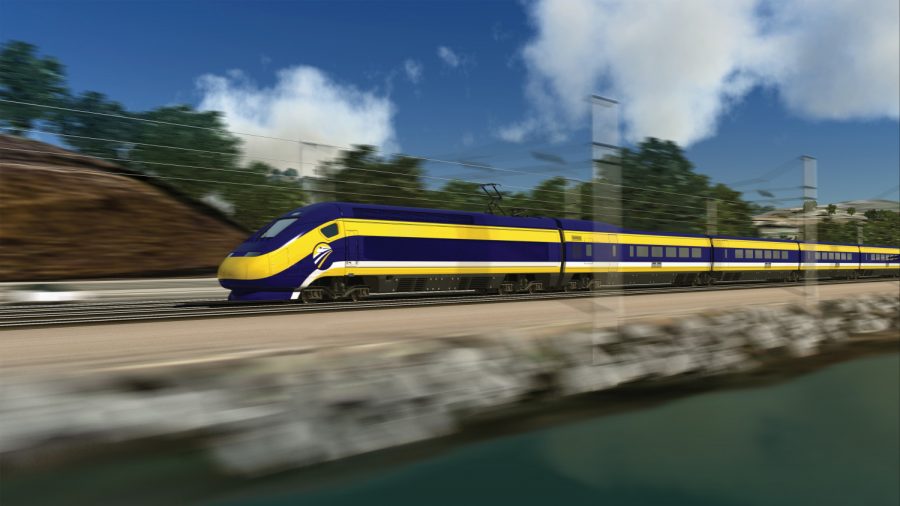A project update report from the California railway authorities has raised the price tag for the Californian rail project to $79 billion.
The railway plan has also been troubled with contract changes, delays, and unexpected cost incurrence, which has more than doubled the project’s original projected cost of $34 billion—renewing calls from critics to abandon the project.
“Again and again, every new report continues to show major cost overruns and taxpayers continue to be punished by Sacramento’s gross mismanagement—taxpayers are being asked to pay more and in return, and they are getting a conventional slower train that does not resemble what was told to voters 2008,” Assemblyman Vince Fong said in a statement. “The bottom line is that we need to either scrap this project entirely or give voters a chance to re-vote on this failed project.”
After reviewing the most recent 2019 report update from the California High Speed Rail Authority:This report…
Posted by Assemblyman Vince Fong on Wednesday, May 1, 2019
Contributing to price hike is said to be due to unforeseen factors in the Central Vally portion of the railway line—the agricultural region of the state. The cost of the segment will rise to $12.4 billion, up by an extra $1.8 billion from last year, and will cover cost increases, a change in project scope, and contingency plans, according to the May 1 report.
The construction of the Central Valley line from Madera to Bakersfield runs about 119 miles and will finish by the end of 2028.

Republican Assemblyman Jim Patterson, who has been critical of the project, also expressed his concerns.
“They’re making it up as they go along. That’s what I’ve concluded,” he said. “How can we have confidence in what they are going to do in the next 10 years when they have failed to meet every single benchmark over the last 10 years?”
“#CAHSR has cost state taxpayers an average $3.1M a day over the last year — a spending rate higher than that for the Bay Bridge, Boston’s Big Dig or any U.S. transportation project in recent history.” https://t.co/Orx8YspTqd pic.twitter.com/wS1ZwWKhAl
— Kevin McCarthy (@GOPLeader) September 4, 2018
Problems Bound
The California Proposition IA was passed by Californian voters a decade ago in 2008. The vision was to construct a high-speed train system that operates at up to 220 miles per hour—the fastest in the country—cutting down the travel time from Los Angeles to San Francisco to less than three hours.
But the construction did not start until 2015, nearly three years behind the schedule, and the final completion date was pushed back from 2028 to 2033.
A state audit issued in November said the California’s High‑Speed Rail Authority’s “flawed decision making and poor contract management have contributed to billions in cost overruns and delays.” The audit also raised questions of whether the project will deliver the high speed it promised, as it has been integrating with the existing infrastructure whenever possible.
.@JerryBrownGov, no amount of political theater can hide the enormous flaws that plague #CAHSR. It’s time to scrap this train to nowhere. ???? pic.twitter.com/EWgLAGoowN
— Kevin McCarthy (@GOPLeader) March 13, 2018
A poll from the Public Policy Institute of California last December (pdf) shows that only one in five voters considered building a high-speed rail system a high priority.
In his State of the State address on Feb. 12, the newly elected California Governor Gavin Newsom stated his commitment to completing the rail line, but said he will be scaling back the scope and focus on the Central Vally segment.
“Let’s be real: The current project, as planned, would cost too much and take too long,” Newsom said. The governor said that there was a lack of oversight and transparency.
A week after Newsom made the speech, the U.S. Department of Transportation withdrew $929 million in funding, and sought the return of another $2.5 billion that has already been put into the rail project.
California now wants to scale back their already failed “fast train” project by substantially shortening the distance so that it no longer goes from L.A. to San Francisco. A different deal and record cost overruns. Send the Federal Government back the Billions of Dollars WASTED!
— Donald J. Trump (@realDonaldTrump) February 20, 2019
Lee Ohanian, a senior fellow at the Hoover Institution think tank and an economics professor at UCLA, thinks that the project was not economically feasible.
“The High-Speed Rail Authority commissioned a study in 2014 that estimated total benefits over time of $80 billion. However, many of the benefits arrive so far in the future that you may as well just make a guess at what those benefits might be, given how quickly technologies evolve that will affect the demand for high-speed rail, including communication and transportation technologies.
“And this 2014 estimate was made before the latest round of delays. After ten years and $5.4 billion, it is now clear that this project, as it currently stands, does not make economic sense,” Ohanian wrote.


